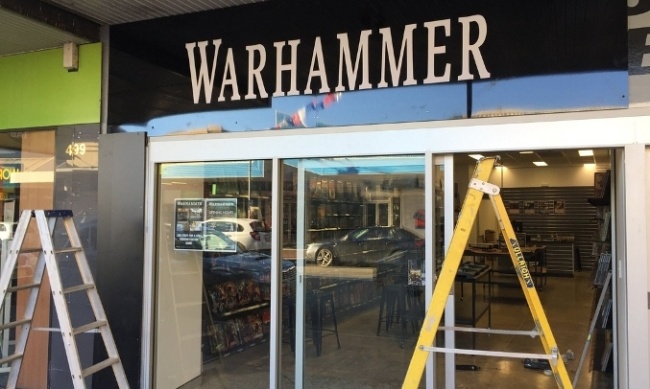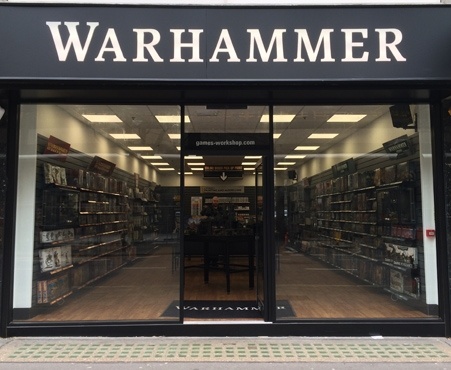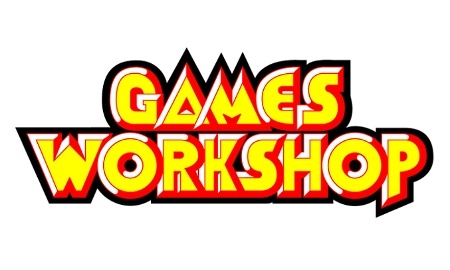Rolling for Initiative is a weekly column by Scott Thorne, PhD, owner of Castle Perilous Games & Books in Carbondale, Illinois and instructor in marketing at Southeast Missouri State University. This week, Thorne looks at Games Workshop's decision to rebrand its retail stores.
As you may or may not have noticed last week, ICv2 reported that Games Workshop is planning to change the name of its retail storefronts from "Games Workshop" to "Warhammer" (see "Games Workshop to Rebrand, Open More Retail Stores"). As I noted in one of my first columns looking at the use of the "Wizards Play" name by WotC for its Organized Play program, this is a good idea from a branding point of view. Customers buy the brand, they don’t care about the company behind it.
Games Workshop worked as a brand name for the company during its formative years during the 1980s when its primary purpose was importing and distributing the releases of a new company known as TSR, which had this really popular Dungeons & Dragons game. Demand for D&D proved quite strong, enough that GW could survive as the official distributor of TSR products in the United Kingdom and, as demand for RPG’s grew along with the interest in them, Games Workshop added on more product lines to their distribution offerings. Games Workshop worked as a name for a distributor because, although I think they did do some direct-to-consumer sales, most of their imports sold to other retailers who then sold to consumers. However, I have never known a RPG player who didn’t think they could make a better system than the one they currently play and Games Workshop proved no exception, launching Citadel Miniatures as a separate company in 1979, releasing the rules for Warhammer Fantasy Battle in 1983, the first edition of Warhammer Fantasy Role Play in 1986 and Warhammer 40,000 in 1987. After all, businesses certainly make much more money by selling their own products than by reselling someone else’s publications.
However, the company retained the name "Games Workshop" as its main brand with each game line a separate product category, and expanded quite aggressively into retail, launching Games Workshop stores worldwide, with each store selling Warhammer Fantasy Battle (or Warhammer: The Game of Fantasy Battles as it was later renamed), Warhammer 40,000, The Lord of the Rings (and later The Hobbit) Strategy Battle Game, Citadel Miniatures and paints, as well as other game lines such as Blood Bowl, Necromunda and Inquisitor. This practice of expanding game lines put a lot of games into Games Workshop’s product portfolio but also meant the company has to spend time and limited resources promoting all of those brands plus the overarching retail Games Workshop brand.
Changing the name of the company’s retail outlets to Warhammer is a change that, had I given it any thought in the past, is 1) an obvious change to make, and 2) probably 20 years overdue. Their customers don’t come to the store looking for that new Games Workshop Codex or figure, they come looking for the new Warhammer or 40,000 product. The company has created incredible brand loyalty among its customers; just look at the number willing to plunk down $50-60 for a new codex only a couple of years after the last one came out. Yes, they complain about the price, but they also buy. Other companies in the industry would kill for that kind of brand loyalty.
Changing the store name means that the Games Workshop brand can now recede into the background to appear in legal documents and on annual reports, while the Warhammer brand now does the heavy lifting of bringing new customers into the hobby and retaining current ones.
The opinions expressed in this column are solely those of the writer, and do not necessarily reflect the views of the editorial staff of ICv2.com.

Column by Scott Thorne
Posted by Scott Thorne on August 24, 2015 @ 12:49 am CT




